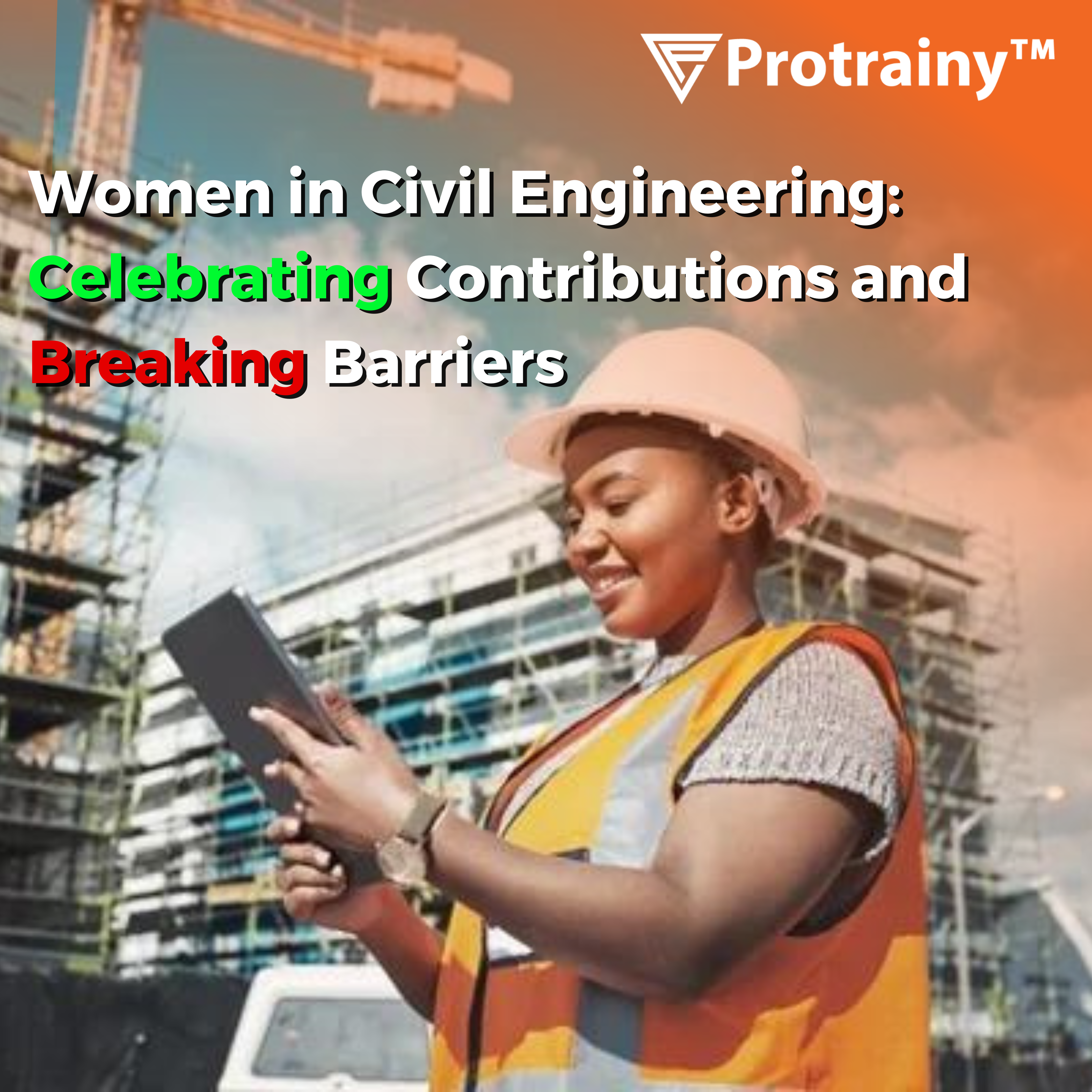Blogs
- Home
- Blogs
Women in Civil Engineering: Celebrating Contributions and Breaking Barriers
Protrainy | Aug. 24, 2023, 1:09 p.m.

Introduction:
Civil engineering, a field historically dominated by men, is undergoing a transformation as women shatter stereotypes, overcome challenges, and carve out their own path in this dynamic industry. With a growing recognition of the importance of diversity and inclusivity, women are making significant contributions to civil engineering projects worldwide. In this blog, we will explore the inspiring journey of women in civil engineering, celebrate their accomplishments, highlight the barriers they've overcome, and reflect on the evolving landscape of gender equality in this traditionally male-dominated profession.
Pioneers of Change: Early Women Trailblazers
Historically, women faced numerous obstacles in pursuing careers in civil engineering. However, a few trailblazers defied societal norms and paved the way for future generations. One such figure is Nora Stanton Blatch Barney, who became the first woman in the United States to earn a civil engineering degree in 1905. Despite facing skepticism and discrimination, Barney's achievements set a precedent for women entering the field. For decades, women aspiring to be civil engineers encountered barriers ranging from biased hiring practices to cultural expectations. Stereotypes and preconceived notions about women's abilities in technical fields created hurdles that had to be overcome. Many women had to navigate a male-dominated environment, where they often felt isolated or undervalued. Despite these challenges, their determination and passion for engineering kept them on course.
Trailblazers in Modern Times: Rising Above Challenges
As the civil engineering landscape evolved, more women began to make their mark. Figures like Elmina Wilson, who became the first female member of the American Society of Civil Engineers in 1927, and Linda Miller, who broke the glass ceiling by becoming the first female president of the American Society of Civil Engineers in 1997, inspired the generations that followed.The inclusion of women in civil engineering brings diversity of thought, experience, and perspective to the field. This diversity drives innovation, as varied viewpoints lead to more creative solutions to complex engineering challenges. Women have excelled in areas such as sustainable design, transportation planning, and project management, contributing to projects that shape our urban environments and infrastructure. Encouraging women to pursue STEM education is crucial to bridging the gender gap in civil engineering. Organizations, universities, and initiatives are working to provide mentorship, scholarships, and educational programs that inspire and support young women interested in engineering careers. By fostering an interest in science, technology, engineering, and mathematics from a young age, we can create a more diverse and inclusive future for the industry.
Changing the Narrative: Success Stories
Countless women have risen through the ranks of civil engineering, leaving an indelible mark on the profession. Ingeborg Rocker, an architect and structural engineer, has designed innovative structures that challenge conventional design norms. Dr. Noha El-Ghobashy is a pioneer in earthquake engineering, contributing her expertise to enhance the resilience of structures in seismic-prone areas. These success stories inspire others and prove that gender does not define capability. Balancing demanding engineering careers with personal responsibilities can be a challenge for anyone. The industry is gradually adapting to offer more flexibility and support for work-life balance, benefitting both men and women. Policies such as flexible working hours, remote work options, and parental leave are helping to retain talented women in the field and prevent the loss of valuable expertise.
Championing Equality: The Path Forward
While progress has been made, gender disparities in civil engineering persist. To champion equality, the industry must continue addressing unconscious biases, fostering mentorship and networking opportunities, and promoting women to leadership roles. Organizations, institutions, and professionals must collaborate to create an environment where women can thrive and contribute their fullest potential.
Conclusion: Empowering the Next Generation
The journey of women in civil engineering is a testament to resilience, determination, and the power of breaking barriers. With each milestone achieved, the path becomes clearer for the next generation of aspiring female engineers. By celebrating the contributions of women in civil engineering and advocating for equal opportunities, we are not only honoring the past but also shaping a future where diversity and inclusion are the cornerstones of success. As women continue to excel in civil engineering, we move closer to a profession that truly reflects the diversity of the world it serves—a profession that embraces innovation, creativity, and equality for all.
